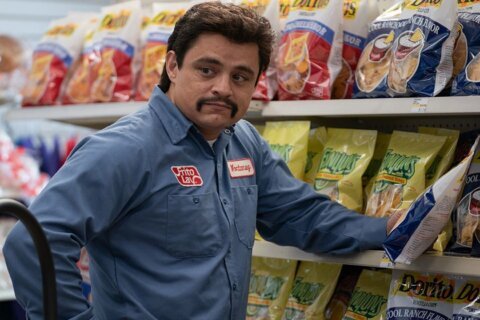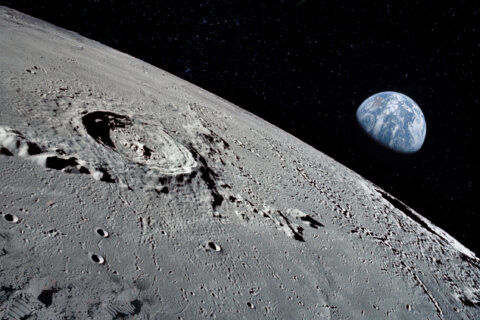Jason Fraley, WTOP film critic
WASHINGTON – Is that John McClane or John McCain?
Twenty-five years after “Die Hard” (1988), Bruce Willis returns as Detective John McClane for a fifth time in “A Good Day to Die Hard.”
The yippee-ki-yay cowboy cop turns 58 next month, but rather than go the “Unforgiven” route with Clint Eastwood barely able to saddle his horse, the filmmakers have chosen to make McClane more invincible than ever.
This is a puzzling choice, not because Willis can’t pull off the action (he’s still a physical specimen), but because it hamstrings the story. “Die Hard 5” pairs McClane with his son Jack (Jai Courtney), who should realistically be a step ahead of his old man but who barely comes off as his physical equal. This is the time the McClane character should be feeling his age and passing the torch, not setting up further sequels for a dynamic duo.
The father-son dynamic is an intriguing angle, similar to Sean Connery and Harrison Ford in “Indiana Jones and The Last Crusade” (1989), which was as good an action/adventure sequel as you’ll find. But while Indy’s father-son relationship was wrapped in a fascinating quest for the Holy Grail, McClane’s father-son relationship is trapped inside a paper-thin plot that more resembles Harrison Ford and Shia LaBeouf in “Indiana Jones and the Kingdom of the Crystal Skull” (2008).
“A Good Day to Die Hard” opens with McClane taking a vacation to Moscow, where he has a chance run-in with his estranged son, who’s now an undercover CIA agent. At this point, we’re willing to roll with it, but as father and son compete in an excessive car chase, we quickly become lost in the action. It seems the villains are trying to track down some kind of file, which contains some sort of evidence that somehow sparked the Chrynobyl meltdown, for some motive of money, that now threatens the world with some sort of WMDs, nukes or something or other.
How frustrating it is to describe a plot when the film’s own screenwriters don’t even care to explain it.
There are some sweet effects, for sure, like a car landing on another car’s hood, catapulting it straight into the camera. But as Willis drives over rows of cars like a monster truck rally, we can’t help but feel like he’s killing more innocent people than bad guys. If this had been the case in the original L.A. high rise, Carl Winslow from “Family Matters” would have shot him dead for collateral damage.
Fans of the series will appreciate its franchise staples, from a building jump- and-swing back through broken glass, to a brutal villain changing his voice pattern to pretend he’s innocent (i.e. Alan Rickman in the original). There’s even a signature sense of “Die Hard” humor, as Willis tries to speak Russian to a Moscow cab driver, who sings “New York, New York” while stuck in traffic.
This is what franchises are good at: Cementing the legacy of their heroes as larger-than-life pop culture figures. However, they do nothing for their filmmakers in the eyes of academic film history. Why? Because we cherish the notion of an original idea; that original spark of creativity that created a cultural moment, like “Die Hard” did in 1988. Not the piggybacking of one artist on another’s brainchild. It’s why we hold The Beatles in higher esteem than The Monkees. As Eisenberg said in “The Social Network” (2010): “If you had invented Facebook, you would have invented Facebook.”
It should be no surprise that writer Skip Woods was the one who morphed TV’s “The A-Team” (1983) into a lame 2010 reboot, or that director John Moore was the one who butchered “The Omen” (1976) with his 2006 remake. The “Max Payne” director has a frantic style, with plenty of shaky camerawork and a love for quick zooms. Depending on your taste, you may enjoy it, but it’s just not my style.
Maybe this is because I watched “Drive” (2011) just hours before going to see “Die Hard 5.” Director Nicolas Winding Refn reinvented the action genre in “Drive” with art-house flair: half-lit faces signaling dual personalities; clever blocking via mirror reflections; camera moves revealing things in slow disclosure; shots allowed to breathe long enough that you can appreciate their composition; elevator doors closing to wipe the frame; effective use of slow motion to create a dreamlike violence; deceptive use of inter-cutting the climax to trick our expectations; and subtle performances that say more with their faces than with their over-the-top words or actions.
“A Good Day to Die Hard” tries a few stylistic things – a cool setup behind a gun-range target, a slow motion helicopter explosion – but it’s backed by zero substance from its script.
Take the climax: Why is there a swimming pool at an abandoned Chernobyl facility? Why is there clean water in it? And how do our heroes conveniently land in it? It’s all splash and no substance, especially compared to the symbolic use of swimming pools in “The Graduate” (1967) and “Rain Man” (1988), its use as a final resting place in “Sunset Blvd. (1950) and “Rebel Without a Cause” (1955) or its use as an auteur staple in “The Royal Tenanbaums” (2001).
What’s that you say? It’s unfair to compare a shoot-em-up genre flick to artistic directors like Nichols, Levinson, Wilder, Ray and Anderson? Your honor, I present the swimming pool finale of “Let the Right One In” (2008), the perfect combo of style and substance, art and entertainment, all within a genre flick about vampires that was so strong that Hollywood craved a remake in “Let Me In” (2010).
I disliked “Die Hard 5” when I first saw it, but the more I think about it, the less I like it. Bruce should stick with original concepts like “Looper” (2012) and stay away from Stallone, Schwarzenegger and “The Expendables 3.”
As Bruce said in “Pulp Fiction” (1994): “Zed’s dead, baby. Zed’s dead,” and Mr. Willis, Haley Joel’s ready for his closeup. He still sees dead people, and boy do they die hard.
★ 1/2
The above rating is based on a 4-star scale.
Follow WTOP Film Critic Jason Fraley on Twitter @JasonFraleyWTOP or check out his blog The Film Spectrum.








